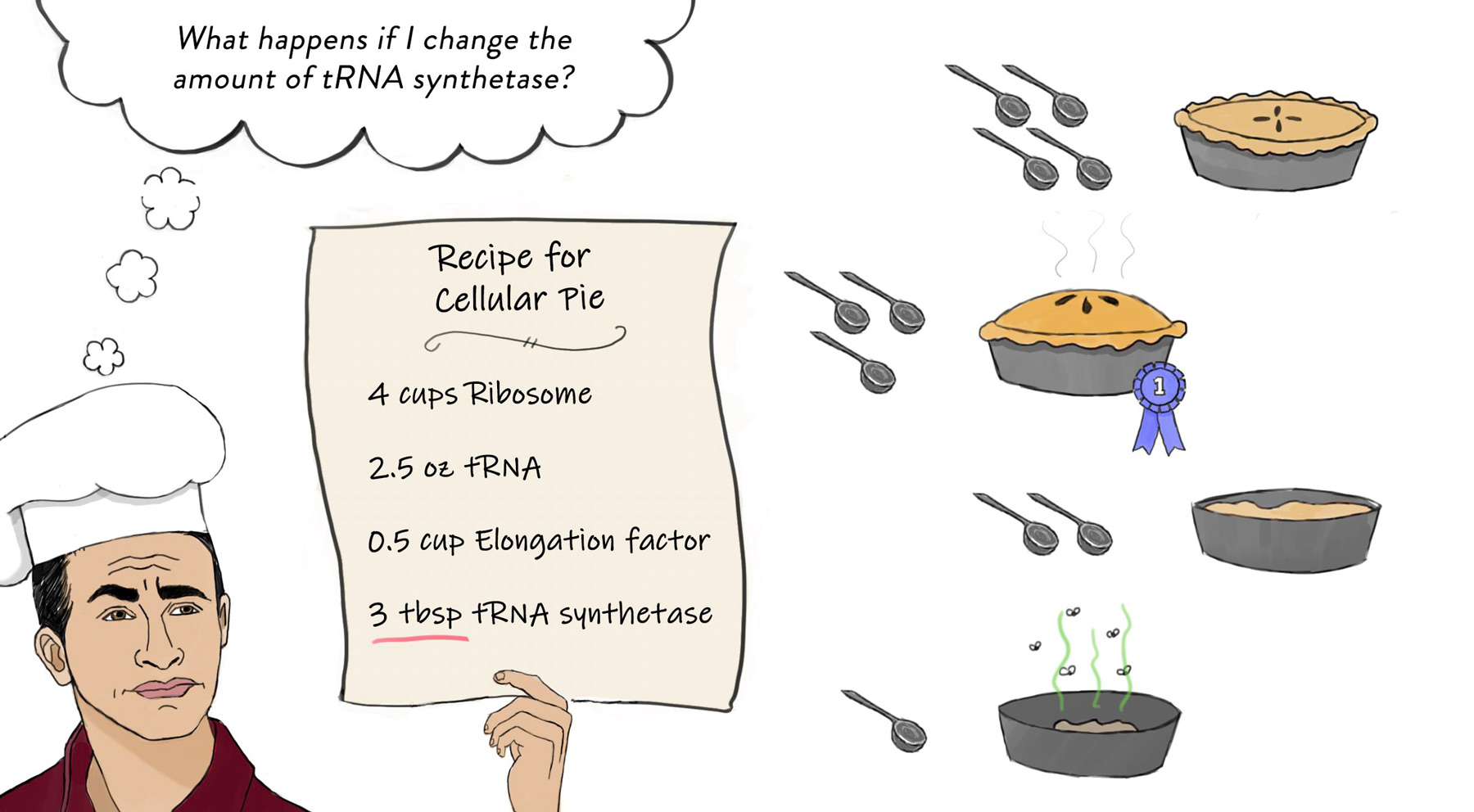
Researchers determine how much of an enzyme is ‘just enough’ to keep a cell healthy and growing.
Raleigh McElvery
July 28, 2020
What ratio of ingredients makes a healthy cell? Researchers know which components are required for proper function, but they’re still working to understand what happens when there’s too much of one protein or not enough of another. As a graduate student in Gene-Wei Li’s lab, Darren Parker PhD ’20 spent years tweaking the recipe for a bacterial cell, adding more or less of one enzyme, aminoacyl-tRNA synthetase (aaRS). He wanted to know: How much aaRS is “just right” for bacterial cells? His findings were published in Cell Systems on July 28.
tRNAs, or transfer RNAs, carry amino acids to the ribosome to help produce proteins. But first, aaRSs must “charge” the tRNAs by attaching an amino acid to them. In doing so, aaRSs not only help the cell make proteins and grow; they also ensure the levels of “uncharged” tRNAs lacking amino acids don’t rise too high, as too many of them can trigger stress responses that slow cell growth. Parker and his collaborators predicted that tinkering with aaRS levels would uncover one of two possible scenarios. Perhaps cells tune their aaRS production to minimize the amount of uncharged tRNAs present. Alternatively, aaRS production could be dictated by the rate of protein synthesis necessary for cell growth — even if that means accumulating uncharged tRNAs.
The researchers determined the latter was true: cells make “just enough” aaRSs to optimize protein production and cell growth. This delicate balance was easily upset when too few aaRSs were produced, cueing the stress responses to kick in and slow growth. Although excess aaRSs reduced the amount of uncharged tRNA, it also hindered cell growth. The researchers determined that the cellular circuits in charge of controlling and sensing tRNA charging are collectively tuned to optimize bacterial growth.
“These results demonstrate that cells have delicately balanced the costs and benefits of producing their proteins,” Parker says. “Understanding the driving forces behind protein production is important for better understanding disease processes, and engineering cells to perform new functions.”
